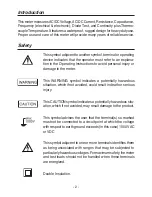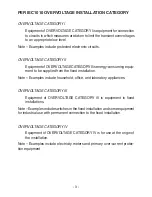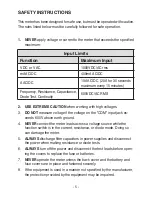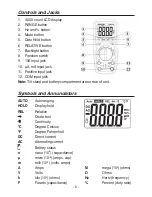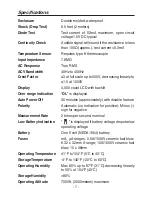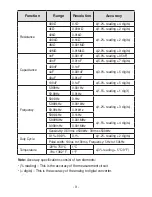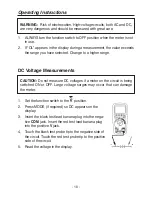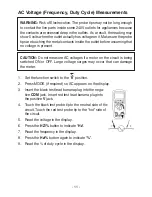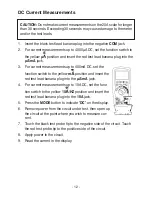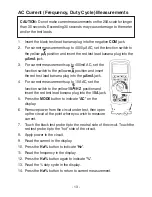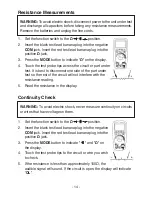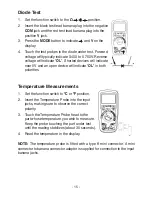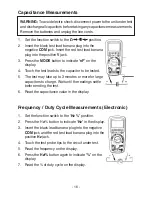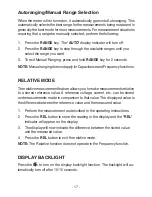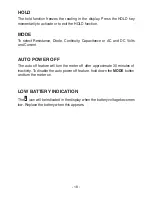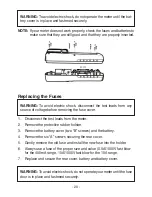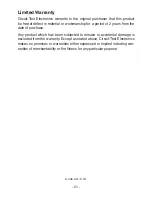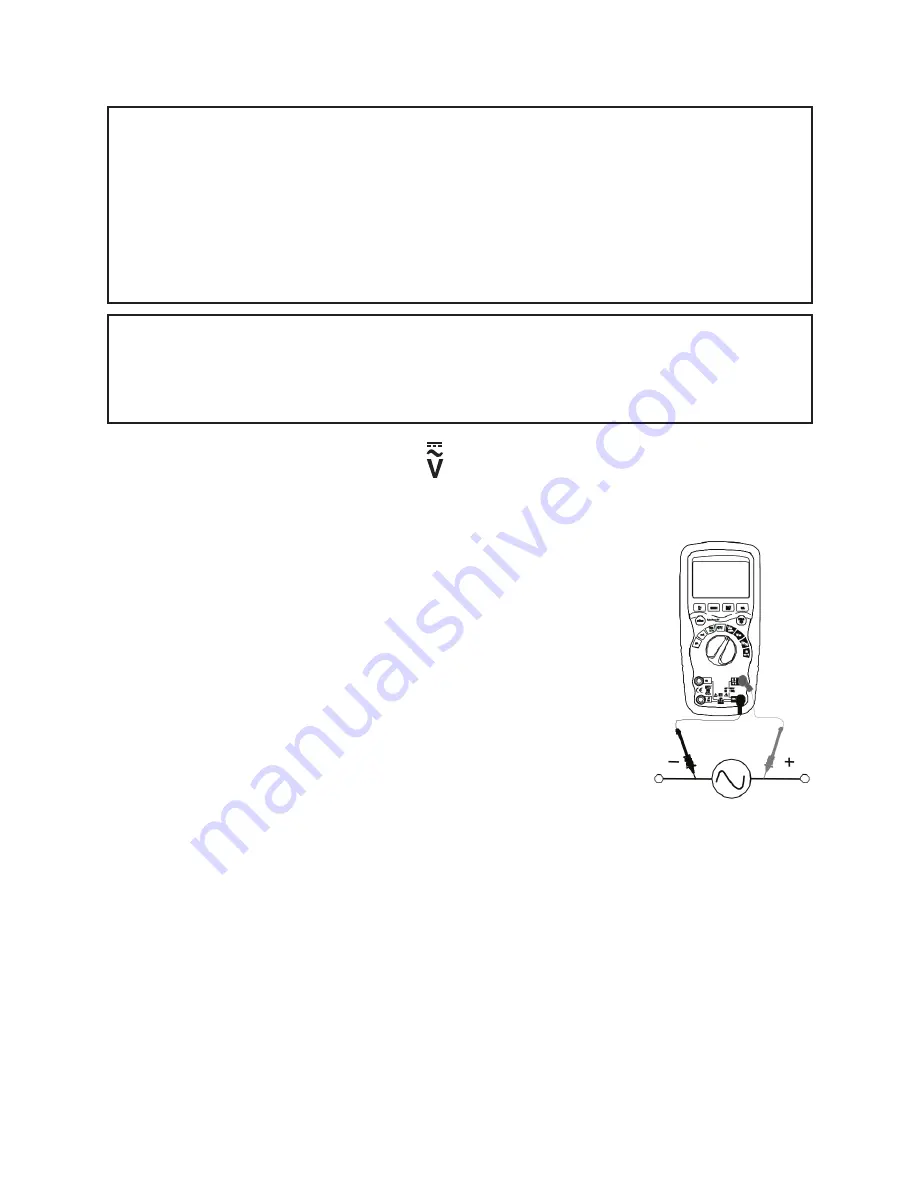
- 11 -
AC Voltage (Frequency, Duty Cycle) Measurements
WARNING:
Risk of Electrocution. The probe tips may not be long enough
to contact the live parts inside some 240V outlets for appliances because
the contacts are recessed deep in the outlets. As a result, the reading may
show 0 volts when the outlet actually has voltage on it. Make sure the probe
tips are touching the metal contacts inside the outlet before assuming that
no voltage is present.
CAUTION:
Do not measure AC voltages if a motor on the circuit is being
switched ON or OFF. Large voltage surges may occur that can damage
the meter.
1. Set the function switch to the position.
2. Press MODE (if required) so AC appears on the display.
3. Insert the black test lead banana plug into the nega-
tive
COM
jack. Insert red test lead banana plug into
the positive
V
jack.
4. Touch the black test probe tip to the neutral side of the
circuit. Touch the red test probe tip to the “hot” side of
the circuit.
5. Read the voltage in the display.
6. Press the
HZ/%
button to indicate “
Hz
”.
7. Read the frequency in the display.
8. Press the
Hz/%
button again to indicate “
%
”.
9. Read the % of duty cycle in the display.


